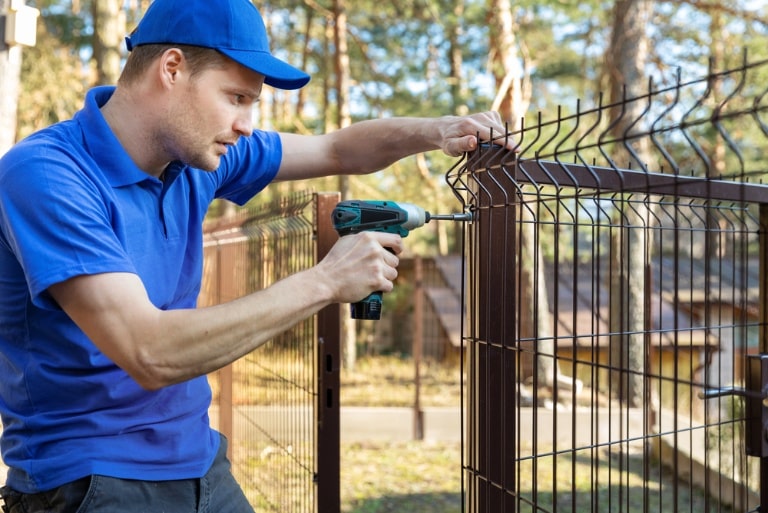What to Know Before Installing a New Fence in Washington State

Installing a new fence is one of the most practical ways to enhance your property’s privacy, security, and curb appeal. But if you’re a homeowner in Washington State, there are a few important things to understand before you start digging post holes. From local zoning laws to material choices that can handle the Pacific Northwest weather, careful planning will help you avoid costly mistakes and ensure your fence lasts for years.
Here’s a complete guide to what you should know before starting your fencing project.
Understand Local Fence Regulations
Before you begin your fence installation in Washington State, it’s essential to check your city or county’s fencing regulations. Each area has specific rules about fence height, location, and materials.
For example:
- Residential fence height limits: In many Washington cities, fences in front yards can’t exceed 4 feet, while backyard fences can typically go up to 6 feet.
- Permits: Some areas require a building permit for fences above a certain height or for those installed near property lines or public right-of-ways.
- Homeowners Associations (HOAs): If you live in a community with an HOA, review their guidelines first — they often have strict rules on color, style, and placement.
Checking these details beforehand ensures your fence complies with local codes and prevents future disputes or fines.
Identify Property Boundaries Accurately
One of the most common mistakes homeowners make is installing a fence on or beyond their neighbor’s property line. This can lead to disputes or even the need to remove and rebuild the fence.
Before you start:
- Locate your property lines using a survey map or property deed.
- Hire a professional surveyor if you’re unsure of the exact boundaries.
- Discuss plans with neighbors to avoid misunderstandings, especially if the fence sits near the property line.
Good communication and clear boundaries protect both your investment and your relationships.
Choose the Right Fence Material for Washington Weather
The Pacific Northwest is known for its rain, moisture, and temperature fluctuations. Choosing the right fencing material is key to ensuring your fence holds up well over time.
Here are some durable and popular options:
1. Wood Fences
Classic and timeless, wood fences are a popular choice for homeowners who want a natural look. Cedar and redwood are excellent options because they resist rot and insects better than other types of wood.
- Pros: Beautiful, customizable, and environmentally friendly.
- Cons: Requires regular staining or sealing to prevent weather damage.
2. Vinyl Fences
Vinyl fences are gaining popularity across Washington for their low maintenance and clean appearance.
- Pros: Resistant to moisture, rot, and UV damage.
- Cons: Can crack in extreme cold and costs more upfront than wood.
3. Metal Fences (Aluminum or Steel)
If security and durability are your priorities, metal fencing is a smart option. It withstands moisture and offers a sleek, modern look.
- Pros: Long-lasting, minimal maintenance, excellent security.
- Cons: Higher initial cost and less privacy.
4. Chain-Link Fences
Affordable and practical, chain-link fences are ideal for large properties, pet enclosures, or utility areas.
- Pros: Cost-effective and quick to install.
- Cons: Not as visually appealing as other materials.
When deciding, consider your property’s function, appearance, and how much maintenance you’re willing to handle.
Plan for Drainage and Slope
Many Washington homes sit on sloped or uneven terrain, which can make fence installation tricky. Poor drainage or uneven ground can cause leaning posts, gaps, or premature wear.
Here’s how to handle it:
- Use stepped or racked fence panels for sloped properties.
- Install proper drainage to prevent water pooling around the base of your fence posts.
- Choose materials resistant to moisture, such as vinyl or pressure-treated wood.
Addressing these factors early helps your fence stay stable and attractive even in Washington’s rainy climate.
Consider Your Fence’s Purpose
Different fences serve different needs. Before selecting a style, think about why you’re installing one in the first place.
- Privacy: Solid-panel fences like vinyl or wood are best.
- Security: Choose tall, durable fences made from metal or composite materials.
- Decoration: Picket or decorative aluminum fences enhance visual appeal.
- Pet or child containment: Opt for secure, mid-height fences with no wide gaps.
Defining your goals will help you choose the right height, material, and design for your space.
Prepare the Site Properly
A strong fence starts with solid preparation. Before installation:
- Clear vegetation and debris from the fence line.
- Mark post locations accurately using stakes and string lines.
- Call 811 before digging — this free service identifies underground utilities, preventing accidents or damage.
Proper site prep ensures a smooth and safe installation process.
Budget for More Than Just Materials
Many homeowners focus only on material costs, but fence installation includes other important expenses.
Consider:
- Labor: Professional installation ensures accuracy, especially for large or sloped yards.
- Permits and inspections: Fees vary by city.
- Maintenance: Wood fences may need staining or sealing every few years.
- Gate hardware or decorative upgrades: Add to your overall cost but enhance function and appearance.
Getting multiple quotes from licensed fence contractors helps you understand what’s included and ensures you’re getting fair pricing.
Timing Your Project Right
In Washington, the best time to install a fence is during the drier months — typically late spring through early fall. Wet ground can make digging and setting posts more challenging, and constant rain may delay completion.
If you’re planning a large project, book early. Many fence installation companies fill their schedules quickly during peak season.
Hiring a Professional Fence Installer
While DIY fence installation might seem tempting, working with certified experienced fencing professionals ensures the job is done correctly and efficiently. Licensed installers know how to handle Washington’s soil conditions, slopes, and weather challenges.
A reliable fence installation contractor will:
- Handle permits and local codes.
- Use quality materials suited for your area.
- Guarantee their workmanship and materials.
Hiring professionals also saves time and helps you avoid costly errors that can occur with improper post setting or uneven alignment.
Maintaining Your Fence for Longevity
Once your fence is installed, regular maintenance will keep it looking new and performing well.
- Inspect annually for loose boards, rust, or damage.
- Clean regularly to remove mildew and debris.
- Seal or stain wood fences every 2–3 years.
- Tighten bolts and hinges on gates as needed.
These small steps extend your fence’s lifespan and preserve your home’s value.
Final Thoughts
Installing a new fence in Washington State involves more than just choosing a design — it’s about planning ahead, following regulations, and selecting the right materials for your property’s needs and climate.
By understanding local laws, preparing your site, and choosing durable fencing materials, you’ll enjoy a structure that enhances both privacy and curb appeal for years to come.
Whether you’re upgrading an old fence or starting from scratch, taking the time to plan properly will make your investment worthwhile — and your home even more beautiful and secure.




